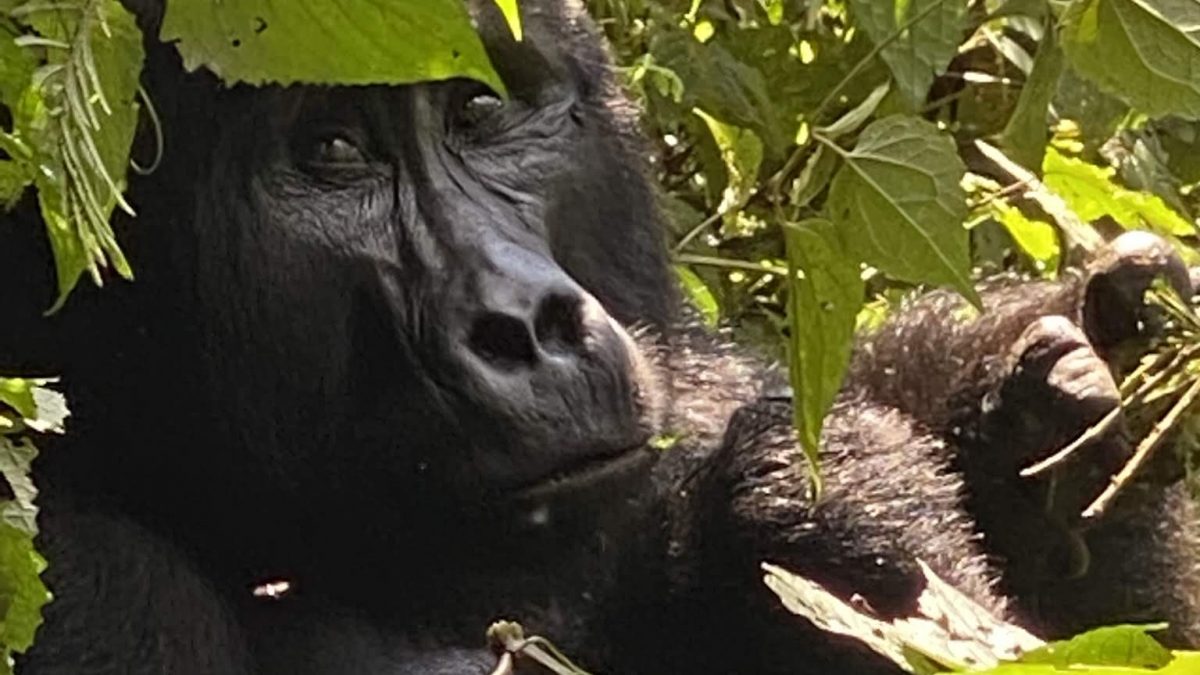What is the elevation of Buhoma? Buhoma, located in the northern section of Bwindi Impenetrable…
What is Bwindi Impenetrable National Park famous for?
What is Bwindi Impenetrable National Park famous for? Bwindi Impenetrable National Park, located in southwestern Uganda along the border with Rwanda and the Democratic Republic of the Congo, is one of the most renowned wildlife destinations in Africa. Here are the key aspects for which Bwindi is famous:

-
Mountain Gorillas
Bwindi Impenetrable National Park is best known as the home to nearly half of the world’s population of endangered mountain gorillas. The park is a vital conservation area for these critically endangered primates. The gorilla trekking experience here is world-famous, as visitors can trek through the dense, misty forests of Bwindi to observe gorilla families in their natural habitat.
- Gorilla Trekking: This is the main attraction in Bwindi, offering visitors the unique opportunity to come face-to-face with mountain gorillas. The trekking experience involves hiking through challenging terrain with guides, and tracking gorilla families that live in different sectors of the park. Once found, visitors can observe the gorillas from a safe distance, usually for an hour, as they go about their daily activities.
- Gorilla Conservation: Bwindi plays a significant role in the global conservation efforts to protect mountain gorillas, whose numbers have been slowly increasing due to these efforts. Tracking and tourism revenues are directly reinvested into the protection of the gorillas and the surrounding environment.
-
Biodiversity and Forest Ecosystems
Bwindi is a biodiversity hotspot, with an incredibly diverse ecosystem. The park covers approximately 331 square kilometers (128 square miles) of both montane and lowland forests, and its dense foliage is home to a wide range of species. In addition to mountain gorillas, Bwindi is home to:
- Primate Species: Aside from gorillas, Bwindi hosts other primates such as the endangered golden monkey, chimpanzees, red-tailed monkeys, blue monkeys, and olive baboons.
- Wildlife: The park also provides refuge to smaller mammals like forest elephants, antelope species, bushbucks, and various species of rodents.
- Birdlife: Bwindi is a paradise for birdwatchers, with over 350 species of birds, including several endemic species, such as the African green broadbill, the Grauer’s broadbill, and the Shelley’s crimson-wing. Birdwatching in the park is a popular activity, especially due to the park’s role as an important birding destination.
-
UNESCO World Heritage Status
Bwindi Impenetrable National Park was designated a UNESCO World Heritage Site in 1994 due to its exceptional biodiversity, particularly the significance of its mountain gorilla population. The park is recognized globally for its role in conserving these endangered species and maintaining the health of the tropical forest ecosystem.
-
Impenetrable Forest Terrain
The park’s name, “Impenetrable,” reflects the dense and rugged forest terrain that defines the area. The forest is thick with trees, vines, and underbrush, making navigation challenging. This dense vegetation also helps protect the animals and plants within the park but requires trekkers to navigate through sometimes difficult, steep, and muddy paths. The challenging trekking conditions add to the sense of adventure for those embarking on the gorilla tracking experience.
-
Cultural Significance
Bwindi is also a key site for cultural tourism. The park is surrounded by several indigenous communities, notably the Batwa (Pygmy) people, who have historically lived in the forest. Visitors to the park can engage in community visits to learn about the Batwa culture, their traditional ways of life, and their historical relationship with the forest.
- Batwa Cultural Encounters: Visitors can experience the Batwa people’s traditional dances, songs, and forest knowledge. The Batwa were once hunter-gatherers in the forests, and now many have integrated into neighboring communities after being displaced by the creation of the park. Some of the proceeds from tourism go towards supporting local communities, including the Batwa.
-
Eco-Tourism and Conservation Efforts
Bwindi Impenetrable National Park is also famous for its eco-tourism initiatives that aim to balance tourism with environmental conservation. The revenue generated from gorilla trekking permits and other park activities is reinvested into conservation programs, community development, and anti-poaching efforts. The park works closely with local communities to foster sustainable practices that benefit both people and wildlife.
-
Stunning Scenic Views
Apart from the wildlife, the park offers breathtaking views of the surrounding mountains, valleys, and dense tropical forest. The landscape, shrouded in mist, adds an almost mystical atmosphere to the park. There are various viewpoints along the trekking routes where visitors can stop and take in the beauty of the area.
-
Other Attractions and Activities
Besides gorilla trekking, Bwindi offers other activities for visitors:
- Forest Walks: Guided forest walks offer the opportunity to explore different parts of the park, discover more of its flora and fauna, and learn about conservation efforts.
- Waterfalls: The park is home to several scenic waterfalls, such as the Munyaga Waterfall, which are accessible via nature walks.
- Batwa Trail: The Batwa Trail is a guided tour led by Batwa elders, providing insights into the community’s traditional forest life before their displacement.
Conclusion
In summary, Bwindi Impenetrable National Park is famous for being a sanctuary for the endangered mountain gorillas and its incredible biodiversity. The park is not only a key destination for gorilla trekking, but it also offers rich cultural experiences, stunning natural beauty, and a strong focus on conservation efforts that benefit both wildlife and local communities. Its dense, misty forests, unique wildlife, and vital conservation efforts make it one of Uganda’s most remarkable natural treasures.



